Editor's note:
Museums across China held many eye-catching cultural exhibitions in 2021. These exhibitions, like a chain of beads connected with the spiritual core of Chinese culture, revealed people and their lives buried deep in time. History condensed in each cultural relic greeted visitors not just with their beauty, but also with flesh and blood, leading visitors through time and space and into ancient people's lives. Let's look back on this ordinary yet extraordinary year for the museums.
1. The Glory within authenticity --- Special Exhibition of the Inheritance of Yongle Palace
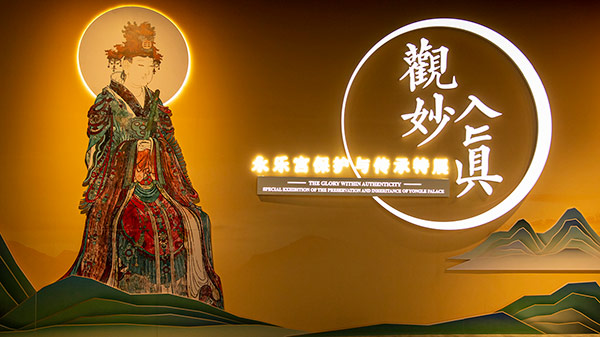
The exhibition The Glory within authenticity --- Special Exhibition of the Inheritance of Yongle Palace was held at the Shanxi Museum in 2021. [Photo/shanximuseum.com]
The exhibition displayed more than 280 items showing cultural and artistic charm of Yongle Palace. It showed the architecture, mural, sculpture art and Taoist culture of Yongle Palace, as well as the preservation and inheritance of cultural relics in the process of relocation.
Located in Ruicheng, a county in Shanxi province, Yongle Palace is one of the top three Taoist temples in the country, along with Chongyang Palace in Shanxi and Baiyun Guan in Beijing.

Part of the murals of Yongle Palace. [Photo/ Attron.net]
Some newly discovered art treasures of the Yuan Dynasty (1271-1368) in this exhibition met the audience for the first time, and a large number of materials on the relocation of Yongle Palace also made their public debut.
The exhibition can be viewed on the official website of the Shanxi Museum.
2. Beyond the Bounds of History: A Collaborative Exhibition Between the Palace Museum and Dunhuang
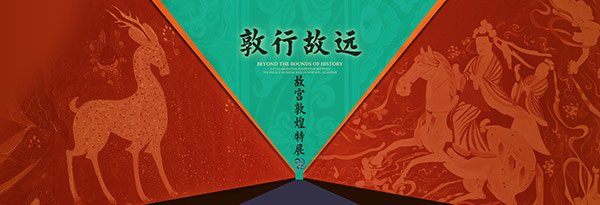
A poster of the exhibition Beyond the Bounds of History: A Collaborative Exhibition Between the Palace Museum and Dunhuang. [Photo/dpm.org.cn]
The exhibition displayed 188 pieces of cultural relics from the Gansu province and the collection of the Palace Museum as well as hand-painted reproductions of Dunhuang murals, high-fidelity digital reproductions of murals, and reproductions of caves 285, 220, and 320, etc.
Among them, there were 47 cultural relics from the Palace Museum, 141 from Dunhuang.
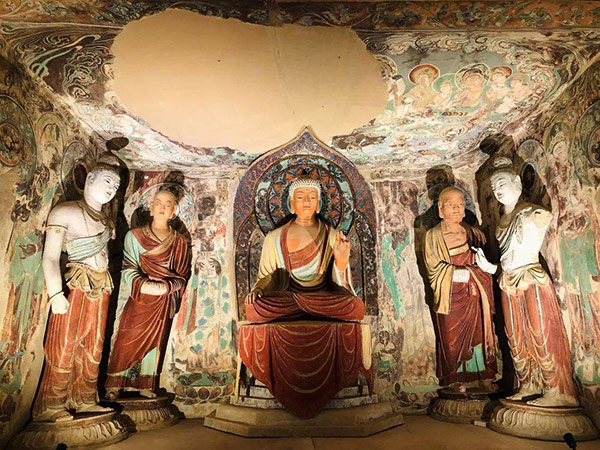
The reproductions of caves 220. [Photo/Attron.net]
The uniqueness of this exhibition lies in the important exhibits, and in the cooperation between the Palace Museum and Dunhuang to show the development history of Dunhuang on the Silk Road, the construction of grottoes and mural sculpture art, as well as the long road of cultural relics protection and inheritance in Chinese Museum circles.
The exhibition can be viewed on the official website of the Palace Museum.
3. A Legend of the Han and Huai Valleys: Selected Bronzes of the State of E

An exhibit ding (food vessel) of the Marquis of E was displayed at the exhibition A Legend of the Han and Huai Valleys: Selected Bronzes of the State of E. [Photo/ shanghaimuseum.net]
The State of E. often not featured prominently in historical records, had long been buried in oblivion. In 2007, when archaeologists excavated a tomb of the early Western Zhou Dynasty (c.11th century-771 BC) in Mount Yangzi of Suizhou, Hubei province, the history of E, having been obscured in the long passage of three thousand years, caught public attention.
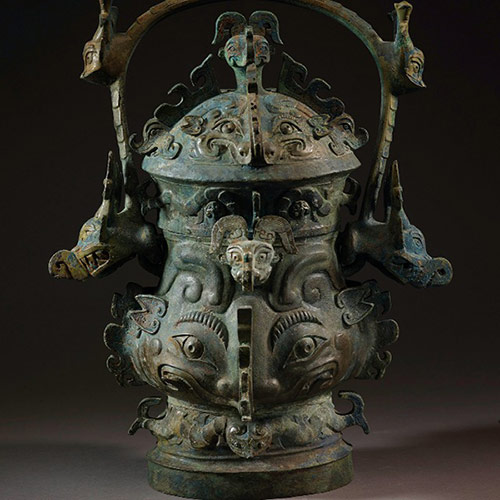
An exhibit you (wine vessel) with the animal-mask pattern was displayed at the exhibition A Legend of the Han and Huai Valleys: Selected Bronzes of the State of E . [Photo/shanghaimuseum.net]
The exhibition, held by the Shanghai Museum, unraveled the mystery of the history of E. It borrowed 57 pieces of selected bronzeware from the National Museum of China, the Suizhou Museum, the Zhengzhou Museum, the Nanyang City Cultural Relics and Archaeology Research Institute, and some private collections.
Through the exhibits and their inscriptions, the exhibition delineated the complete evolution of E's bronze art and depicts the state's true presence in history.
Some of the exhibits can be viewed on the official website of the Shanghai Museum.
4. One under Heaven: Exhibition of Guangzhou Archaeological Discoveries from the Qin-Han Dynasties

The exhibition One under Heaven: Exhibition of Guangzhou Archaeological Discoveries from the Qin-Han Dynasties was held at the National Museum of China in 2021. [Photo/chnmuseum.cn]
The exhibition, through the latest archaeological excavations in Guangzhou, displayed the glorious ancient historical and cultural features of Lingnan from the perspective of civilization creation, cultural inheritance and integration and exchange.
On display were over 330 precious cultural relics unearthed from the tomb of the Nanyue King, the site of the Nanyue palace, and other Qin and Han archaeological sites in Guangzhou. They come from the collections of the Western Han Nanyue King's Tomb Museum, the Guangzhou Municipal Institute of Cultural Heritage and Archaeology, and the Archaeological Site Museum of Nanyue Palace.
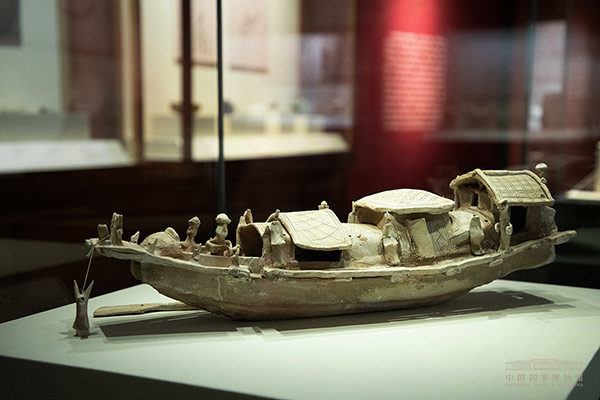
An exhibit was displayed at the National Museum of China. [Photo/chnmuseum.cn]
The whole exhibition hall was decked in red, creating a solemn and elegant atmosphere. Through the circuitous exhibition line, it reproduced the cultural life of Lingnan more than 2,000 years ago and how these civilizations were discovered by future generations two thousand years later.
The exhibition can be viewed on the official website of the National Museum of China.
5. Remarkable and Graceful: Special Exhibition of Dazu Rock Carvings
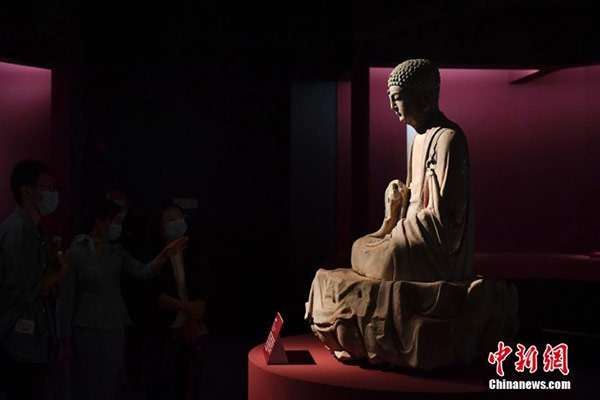
A Buddha statue of Sakyamuni (Southern Song Dynasty) on display at the National Museum of China. [Photo/Chinanews.com]
The exhibition was the centralized display of 82 collections from the Dazu Rock Carvings Museum.
Among the exhibits were such figures as dignified and elegant Bodhisattvas, merciful and solemn Buddhas, humble looking almsgivers, vivid looking drunkards, and intricately patterned incense burners. These were considered as the peak of Chinese stone carving art aesthetics.
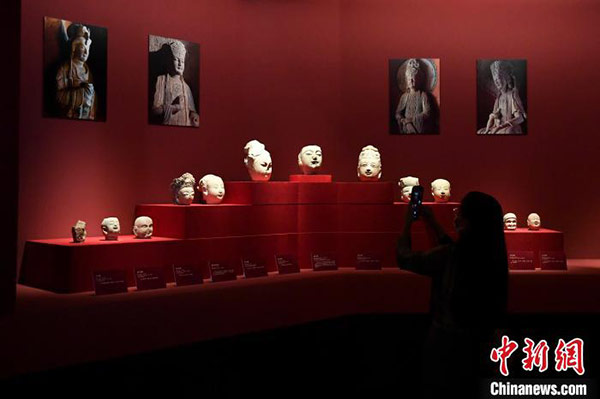
A visitor takes a photo of the exhibits on display at the National Museum of China. [Photo/Chinanews.com]
The exhibition was divided into four units to convey the style of Dazu stone carvings to the audience through the combination of traditional display means and modern technology.
It was a comprehensive display of Dazu stone carving art and history, and a presentation of the achievements of Dazu stone carving cultural heritage protection and inheritance over the years.
6. Pursuing Eternity: Conservation of Museum Collections in China

A poster of the exhibition Pursuing Eternity: Conservation of Museum Collections in China. [Photo/capitalmuseum.org.cn]
In conjunction with the ICOM-CC 19th Triennial Conference held in Beijing, the exhibition opened as the special activity of China's main venue on International Museum Day in 2021.
The exhibition brought together more than 50 pieces or sets of cultural relics from 23 museums and cultural organizations in 10 provinces and cities, including national treasures, important archaeological discoveries in recent years, and exquisite restoration of cultural relics.
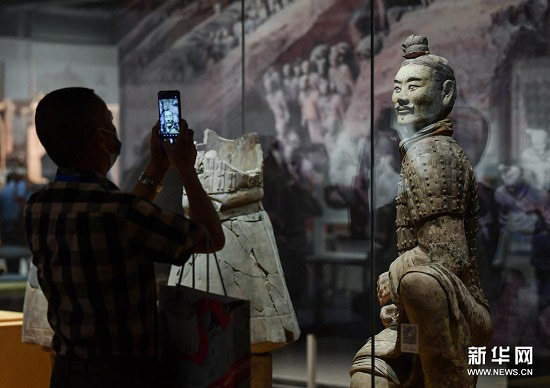
A visitor takes a photo of an exhibit at the Capital Museum. [Photo/Xinhua]
It offered important scientific research achievements and representative exhibits nationwide, introducing the scientific cognitive methods and protection and restoration technologies of cultural relics in China, displaying the latest achievements of cultural relics protection in China.
Some of the exhibits can be viewed on the official website of the Capital Museum.
7. Our Asia: Ancient Asian Civilizations Exhibition

A poster of the exhibition Our Asia: Ancient Asian Civilizations Exhibition. [Photo/hnmuseum.com]
More than 220 pieces or sets of precious cultural relics from seven Asian countries appeared in the exhibition, showing the characteristics of Asian Civilization in the rising stage, development stage and dissemination process.
The exhibition, taking historical time as its context, was divided into two major historical phases, pre-Hellenistic Asia and post-Hellenistic Asia, with Alexander the Great's Eastern Expedition and Hellenization as the dividing line.

A visitor looks at an exhibit at the exhibition Our Asia: Ancient Asian Civilizations Exhibition in the Hunan Museum. [Photo/hnmuseum.com]
The exhibits were grouped together by region and content, displaying the origins and development of Asian civilizations, and the exchange, collision and fusion of thousands of years of East and West civilizations across Asia.
The exhibition can be viewed on the official website of the Hunan Museum.
8. Figure Paintings from Across the Ages in the Palace Museum Collection

A poster of the exhibition Figure Paintings from Across the Ages in the Palace Museum Collection (Phase I). [Photo/dpm.org.cn]
The Palace Museum launched two phases of the exhibition Figure Paintings from Across the Ages in the Palace Museum Collection in 2021, one was Paragons of the Nation, and the other was The Elegant Retreat.
The first phase displayed 55 precious works (or sets) with artistic and historical value showcased based on the identities of the figures and by period. It was divided into three units, namely figures of 16 outstanding emperors, figures of 19 important ministers, and figures of 23 outstanding women in previous dynasties. Featured figures include Qing Emperor Kangxi (1662–1722), general Yue Fei (1103–1142) and Wang Zhaojun (54–19 BC), one of China's four beauties.

Part of a painting of the exhibition displayed at the Palace Museum in 2021. [Photo/dpm.org.cn]
Seventy-six paintings were displayed at the second phase, focusing on the figure paintings of hermits in ancient times.
In appraising figure paintings, the artistic achievement was emphasized and the underlying historical and culture value explored.
The exhibition can be viewed on the official website of the Palace Museum.
9. Mirrors of Eternity: A Cultural Exhibition of Ancient Chinese Bronze Mirrors

The preface of the exhibition Mirrors of Eternity: A Cultural Exhibition of Ancient Chinese Bronze Mirrors. [Photo/ chnmuseum.cn]
More than 260 exhibits were selected from thousands of bronze mirrors, related accessories and pottery casting models in the collection of the National Museum.
This exhibition connected the entire development of ancient Chinese bronze mirrors and systematically demonstrated their historical, aesthetic, technological and cultural value.
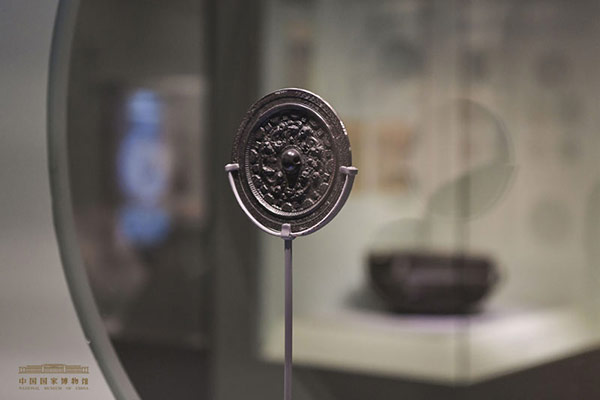
A bronze mirror was on display. [Photo/chnmuseum.cn]
It reproduced the achievements of ancient Chinese copper smelting and casting technology, demonstrated the unique aesthetic consciousness and values of the Chinese nation, as well as the Chinese people's yearning for and pursuit of a better life since ancient times, and revealed the extensive influence of Chinese culture.
The exhibition can be viewed on the official website of the National Museum of China.
10. Bronze Age Civilization in the Yangtze River Valley
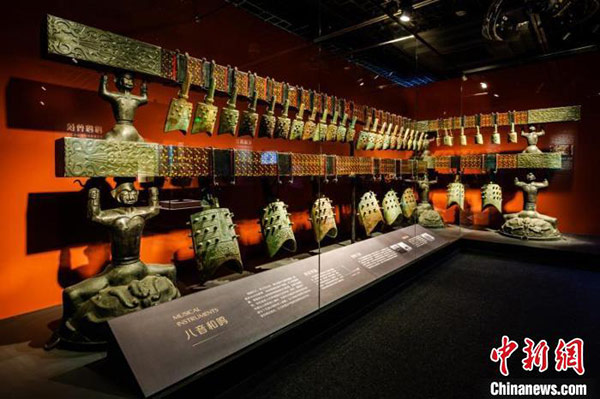
Exhibits of the exhibition Bronze Age Civilization in the Yangtze River Valley were on display at the Sichuan Museum in 2021. [Photo/China news.com]
The exhibition displayed 518 pieces or sets of cultural relics from 48 museums and cultural organizations in 10 provinces.
It focused on the unique style and charm of the three cultural circles of Ba-shu culture, Jing-chu culture, and Wu-yue culture in the Yangtze River Basin during the Shang and Zhou dynasties (c.16th century - 256 BC), and provided a rare feast of the bronze civilization.

The exhibition Bronze Age Civilization in the Yangtze River Valley opened at the Sichuan Museum in 2021. [Photo/China news.com]
The exhibits were mainly bronze, including cultural relics unearthed in Sanxingdui and Jinsha sites, as well as some jade, gold and lacquerware created during the same period.
The exhibition can be viewed on the online exhibition hall at the official website of the Sichuan Museum.
Source: China Daily
Editor: Lv Yun